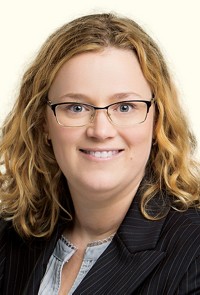Advertisement
Grab your lab coat. Let's get started
Welcome!
Welcome!
Create an account below to get 6 C&EN articles per month, receive newsletters and more - all free.
It seems this is your first time logging in online. Please enter the following information to continue.
As an ACS member you automatically get access to this site. All we need is few more details to create your reading experience.
Not you? Sign in with a different account.
Not you? Sign in with a different account.
ERROR 1
ERROR 1
ERROR 2
ERROR 2
ERROR 2
ERROR 2
ERROR 2
Password and Confirm password must match.
If you have an ACS member number, please enter it here so we can link this account to your membership. (optional)
ERROR 2
ACS values your privacy. By submitting your information, you are gaining access to C&EN and subscribing to our weekly newsletter. We use the information you provide to make your reading experience better, and we will never sell your data to third party members.
Comment
Comment: Lessons learned from Charles Goodyear and the Committee on Patents and Related Matters
by Justin L. Krieger, chair, CPRM
June 29, 2024
| A version of this story appeared in
Volume 102, Issue 20

In 1839, Charles Goodyear was on the verge of a momentous discovery. Natural rubber is useful within only a narrow temperature window—it becomes a foul-smelling goo at slightly elevated temperatures and hard and brittle at low temperatures. Chemists in the US and abroad had been searching for decades for a way to solve this problem. Goodyear was obsessed with finding a solution. He tried everything he could think of, frequently working out of his home kitchen. Eventually, he fell on hard times, getting evicted from his home and making several trips to debtors’ prison. In a fortuitous stroke of luck, Goodyear happened to drop a mixture of natural rubber, sulfur, and white lead onto a hot stove. When he picked it up, expecting the rubber to be a molten mess, he found that it was soft and pliable like leather. He immediately realized he had stumbled onto something great—the vulcanization of rubber.
Goodyear was quick to patent his invention in the US. But in Europe, where there was a bigger market, he was slower to act. Low on money, he sent vulcanized rubber samples to England in the hopes of finding investors and shipped some rubber shoes to France for sale. From the samples, an English competitor was able to reverse engineer Goodyear’s discovery and beat him to the British patent office. Although Goodyear obtained a French patent, it was short-lived and soon invalidated based on his prior shoe sales. While Goodyear achieved great praise and fame for his discovery, he never achieved financial success, ultimately passing away in 1860 deeply in debt. Although his misfortune occurred long ago, we can still learn from Charles Goodyear and the mistakes he made trying to navigate the patent system.
The Committee on Patents and Related Matters (CPRM) is dedicated to educating the chemical enterprise about the patent system and other forms of intellectual property so that innovators can avoid mistakes like those made by Goodyear. To expand its outreach, CPRM is excited to announce that it is launching a new website aimed at helping those within ACS to more easily access educational materials regarding intellectual property. CPRM has long published an informative pamphlet titled “What Every Chemist Should Know about Patents.” This paper has served as a free guide for countless chemists to protecting their innovations. The newly updated fifth edition has been completed and is now available on our website at acs-cprm.com.
In addition to education and outreach, CPRM monitors newly proposed legislation, patent office rules and guidelines, and any important case law developments to the extent they are relevant to ACS membership. The committee then makes recommendations to ACS leadership on supporting or opposing such measures and decisions. For example, Congress is currently considering legislation (S.2140) relating to what sorts of discoveries can be protected by patents (patent eligibility). Additionally, the patent office is considering new rules regarding the impact of artificial intelligence on patentability. For example: Can AI author a patent application or a prior art disclosure? Should inventors be obligated to disclose if AI was used in the discovery of their inventions? Visit our website to learn more about these proposals and their potential impact on those conducting research in the field of chemistry. You can also submit your feedback through the website on how you feel about these proposed changes.
One of CPRM’s most rewarding responsibilities is nominating deserving candidates for various national awards in innovation, such as the National Inventors Hall of Fame, the ACS Award for Creative Invention, the National Medal of Technology and Innovation, and the ACS Fellows Program, among others. We solicit suggestions for worthy candidates, prepare nomination packets, and make recommendations to ACS leadership on individuals to support for these awards. Recently, one of our nominees, industrial chemist Margaret Wu, was inducted into the National Inventors Hall of Fame for her contributions to the field of synthetic lubricants. With so many deserving candidates, this responsibility can be difficult. We need your help! We encourage you to get engaged and learn more about these awards on our website, where you can submit candidates for consideration.
In advance of ACS Fall 2024 in Denver, CPRM is coordinating with the Committee on Meetings and Expositions on planning an exhibition by the Rocky Mountain Regional Office of the US Patent and Trademark Office (USPTO). If you are interested in learning more about the USPTO, the process of examining patent applications, or even becoming a patent examiner, be sure to check it out! We can only imagine that given such resources to learn more about intellectual property, Charles Goodyear would have been better positioned to reap the benefits of his groundbreaking discovery.
Views expressed are those of the author and not necessarily those of C&EN or ACS.





Join the conversation
Contact the reporter
Submit a Letter to the Editor for publication
Engage with us on Twitter